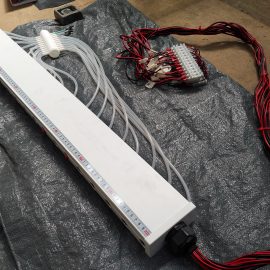Behavioural guidance systems are used to direct the movements of commercially or recreationally valuable fish around facilities such has hydropower dams that can threaten their survival, and are also employed to prevent the spread of exotic organisms through natural and human-mediated pathways. Combined bubble/sound barriers are among one of several such stimuli, and have shown promise for species with specialised hearing abilities such as Common Carp (Cyprinus carpio). There is a lack of understanding on how certain properties of bubbles, such as coalescence or resonance, can be used to improve effectiveness of existing designs. Furthermore, it remains unclear whether effectiveness is a result of two stimuli acting separately, or in conjunction with one another, and via which mechanism. Research at ICER is currently examining the behaviour of juvenile carp exposed to insonified bubbles in an external circular raceway. Simple items such as hypodermic needles and haptic feedback motors are used to create a wall of resonating bubbles and investigate the reaction of carp to individual components of the signal.
This research is funded by the Engineering Physical Sciences Research Council (EPSRC).
Media:
People:
Nicholas Flores Martin
Prof. Paul Kemp
Prof. Tim Leighton
Prof. Paul White


